Part
2
 Last
week I offered some thoughts about how the casual (read smartphone)
photographer can take some simple steps to improve how their pictures are seen
on social media. Today’s smartphones have remarkably sophisticated
cameras crammed into their tiny cases and, with just a little attention to
their strengths and limitations, you can get surprisingly good results.
Last
week I offered some thoughts about how the casual (read smartphone)
photographer can take some simple steps to improve how their pictures are seen
on social media. Today’s smartphones have remarkably sophisticated
cameras crammed into their tiny cases and, with just a little attention to
their strengths and limitations, you can get surprisingly good results.
This
week I move to the other end of the spectrum and discuss my overly compulsive
work-flow, using every possible approach to get the most out of my
images.
Caring
about your Image
 Social
Media has increasingly become an important venue for professional photographers
to show their work . Many more people see my images online than in all my
exhibitions, or in print. Given the dizzying number of online venues, I
could easily spend all my time just trying to keep up with posting images and
responding to comments, but I try to reserve a little time to actually get out
to take pictures.
Social
Media has increasingly become an important venue for professional photographers
to show their work . Many more people see my images online than in all my
exhibitions, or in print. Given the dizzying number of online venues, I
could easily spend all my time just trying to keep up with posting images and
responding to comments, but I try to reserve a little time to actually get out
to take pictures.
My
approach to social media follows two simple rules.
1) Limit the Number of Venues
 I
know that there are many choices out there, but I limit my postings primarily
to Facebook and Twitter. I publish images on several Facebook accounts, most notably my own, and
the New England Photographer’s Guild pages. I limit postings to a few of my
recent images and some to promote the topic of my latest weekly blog. I
have accounts on 500px, Google + and Instagram, but I rarely visit. I know that
Instagram is popular but I have never found that its format works to show my
work at its best.
I
know that there are many choices out there, but I limit my postings primarily
to Facebook and Twitter. I publish images on several Facebook accounts, most notably my own, and
the New England Photographer’s Guild pages. I limit postings to a few of my
recent images and some to promote the topic of my latest weekly blog. I
have accounts on 500px, Google + and Instagram, but I rarely visit. I know that
Instagram is popular but I have never found that its format works to show my
work at its best.
2) Only Show
the Best Work
 I
try to post pictures to social media on a regular basis, usually daily, but I
only publish images that I have edited to my satisfaction. This doesn’t
mean that I only show my occasional “Hero” shots, but frequently pick images
that illustrate a point from a blog or that tell the story of a recent shoot.
Most images may not “fine art”, but I try to select and edit them to
communicate to their best potential. Even when the picture comes from my
iPhone, I don’t merely snap and dump. Whether they are edited in one of
the excellent photo apps, or in Lightroom and Photoshop, the goal is always to
show that I take my photography seriously and devote the time and care that
each image deserves.
I
try to post pictures to social media on a regular basis, usually daily, but I
only publish images that I have edited to my satisfaction. This doesn’t
mean that I only show my occasional “Hero” shots, but frequently pick images
that illustrate a point from a blog or that tell the story of a recent shoot.
Most images may not “fine art”, but I try to select and edit them to
communicate to their best potential. Even when the picture comes from my
iPhone, I don’t merely snap and dump. Whether they are edited in one of
the excellent photo apps, or in Lightroom and Photoshop, the goal is always to
show that I take my photography seriously and devote the time and care that
each image deserves.
Workflow
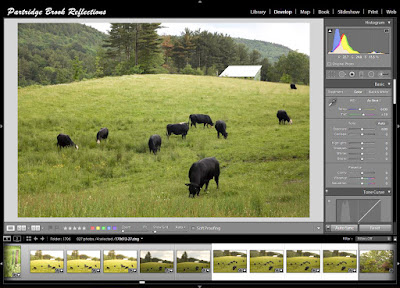 |
| Lightroom Editing |
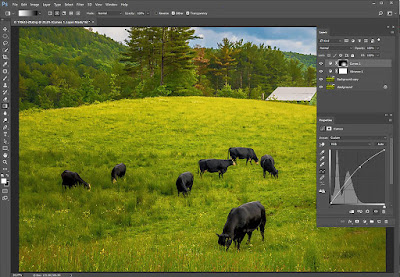 |
| Photoshop Tweeks |
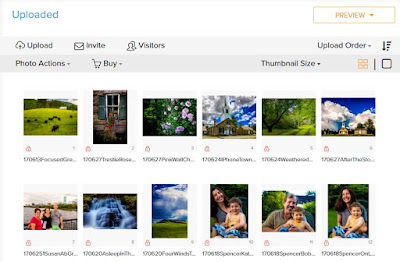 |
| "Cloud" Upload to Zenfolio |
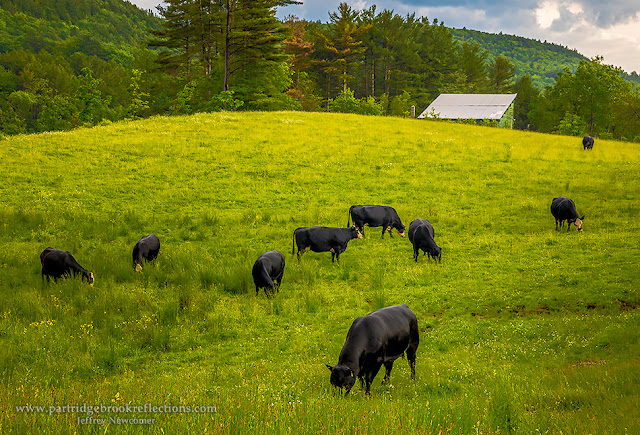 |
| Web Image |
Finally
I resize the large JPGs to a web friendly size, with a long
dimension of
950pixels. I reduce the quality to yield an image that is about
400pixels. I create this “web version” of all my finished picture, but only
post a few. I keep the rest in my own private web gallery, that allows me
to quickly scan for needed images. These pictures still look good on the web
and, as long as they include my watermark, I don’t mind people copying them to
show on their sites. Obviously, I don’t expect them to be sold or used
commercially. People still steal my work. but the quality deteriorates quickly, if
pirates try to blow up these images. I’ve seen some terribly meat-handed
attempts to obscure my watermark, but I don’t spend too much time chasing these
creeps. I mostly try to accept the compliment and reassure myself that
these thieves would have never actually payed me for my work.
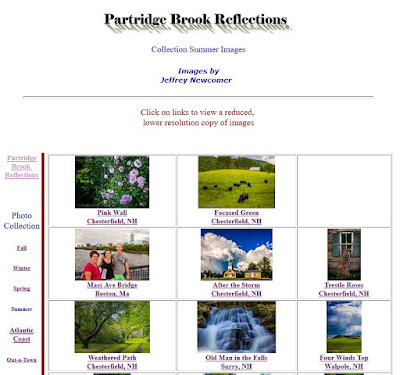 |
| Private Image Gallery |
 So
now I have two backed-up raw copies, a layered reference copy, a full size JPG
on my computer and in the cloud, and a web-sized image saved to my private web
gallery. Oh and I release a few of my favorites to the world, on my web
site and social media.
So
now I have two backed-up raw copies, a layered reference copy, a full size JPG
on my computer and in the cloud, and a web-sized image saved to my private web
gallery. Oh and I release a few of my favorites to the world, on my web
site and social media.
The
whole process can take anywhere from a few minutes to a couple of hours
depending on how much detailed masking and cloning is required. You must develop your own workflow, but it
all comes back to getting the best from every image. These little piles
of pixels deserve nothing less and, in the end, they are how the world will
judge your work.
Time
to move on to the next picture.
Jeffrey Newcomer


This is a very informative post! have started following your website religiously! Like you post such simple tips which are very easy to follow
ReplyDeleteThis is a very informative post. Look your picture is very peaceful. Thank you for sharing.net worth
ReplyDelete